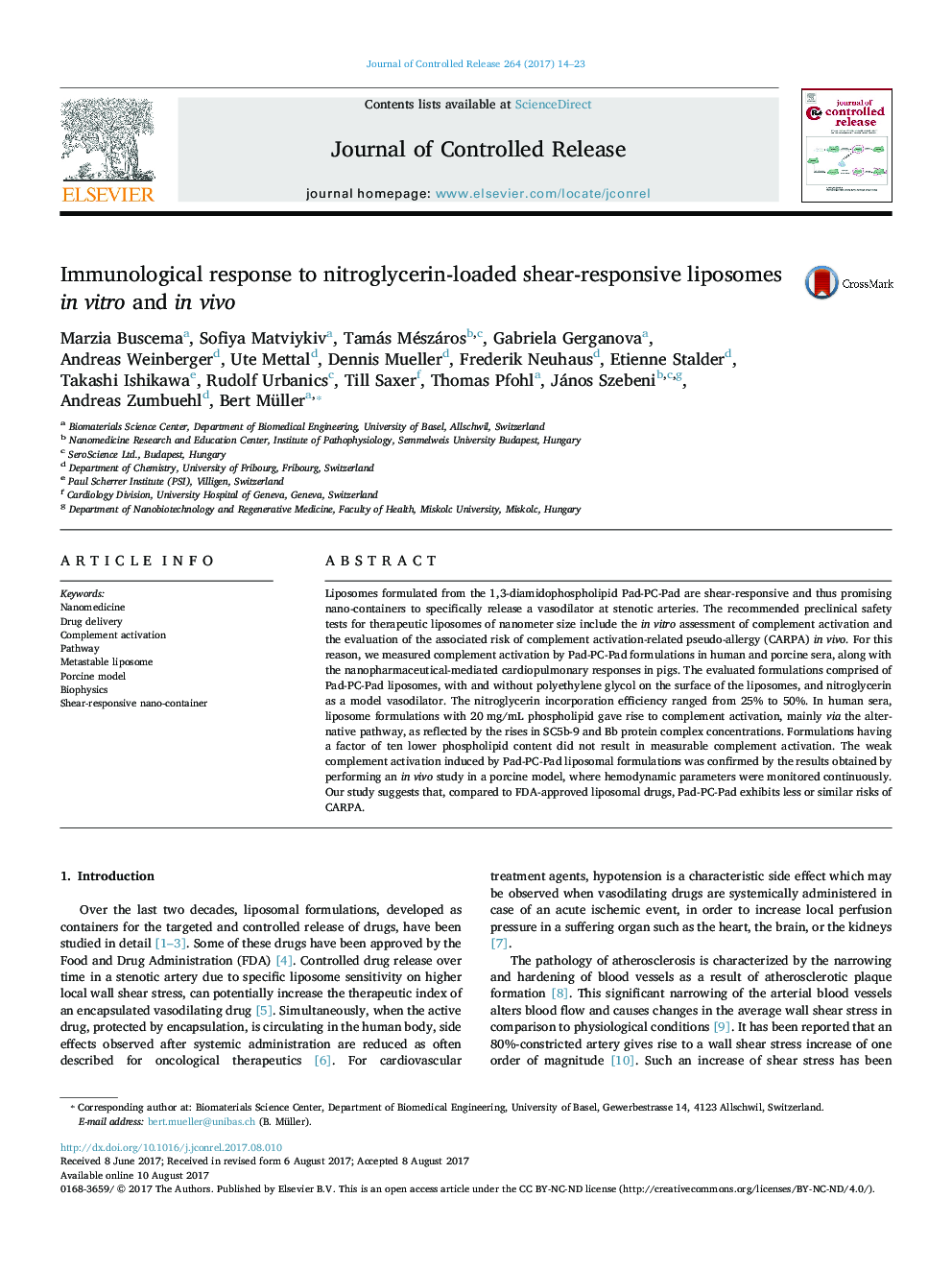| Article ID | Journal | Published Year | Pages | File Type |
|---|---|---|---|---|
| 5433353 | Journal of Controlled Release | 2017 | 10 Pages |
Liposomes formulated from the 1,3-diamidophospholipid Pad-PC-Pad are shear-responsive and thus promising nano-containers to specifically release a vasodilator at stenotic arteries. The recommended preclinical safety tests for therapeutic liposomes of nanometer size include the in vitro assessment of complement activation and the evaluation of the associated risk of complement activation-related pseudo-allergy (CARPA) in vivo. For this reason, we measured complement activation by Pad-PC-Pad formulations in human and porcine sera, along with the nanopharmaceutical-mediated cardiopulmonary responses in pigs. The evaluated formulations comprised of Pad-PC-Pad liposomes, with and without polyethylene glycol on the surface of the liposomes, and nitroglycerin as a model vasodilator. The nitroglycerin incorporation efficiency ranged from 25% to 50%. In human sera, liposome formulations with 20Â mg/mL phospholipid gave rise to complement activation, mainly via the alternative pathway, as reflected by the rises in SC5b-9 and Bb protein complex concentrations. Formulations having a factor of ten lower phospholipid content did not result in measurable complement activation. The weak complement activation induced by Pad-PC-Pad liposomal formulations was confirmed by the results obtained by performing an in vivo study in a porcine model, where hemodynamic parameters were monitored continuously. Our study suggests that, compared to FDA-approved liposomal drugs, Pad-PC-Pad exhibits less or similar risks of CARPA.
Graphical abstractDownload high-res image (175KB)Download full-size image
